Silencer Saturday #389: Can You Thread Your Own Barrel?

Good afternoon, everyone, and welcome back to TFB’s Silencer Saturday, brought to you by Yankee Hill Machine, manufacturers of the new Victra-12 shotgun suppressor. Welcome back to another edition of Silencer Saturday. This week, we will be talking about feral threading. Can you do it yourself? Should you do it yourself, let's discuss.
Silencer Saturday @ TFB:
- Silencer Saturday #388: Suppressing The Century C-93
- Silencer Saturday #387: The Big Beautiful Bill Passed, So Now What?
- Silencer Saturday #386: Faxon Twenty-Toucan - Heavy-Duty Modularity
- Silencer Saturday #385: The Big Beautiful Bill & The NFA
- Silencer Saturday #384: The “DIY-DF” 10/22 Clone
Disclaimer: Use this information at your own risk. If you damage or destroy your gun trying to do this yourself, that is on you. If you have any doubts about whether or not you can successfully complete this job, please have a qualified gunsmith do it for you.
How Are Barrels Threaded?
With the notable exception of a very few interesting suppressors, almost all silencers mount to threaded barrels. Even many integral suppressors are attached to an underlying barrel with threads on it somewhere. As silencer technology has developed and improved. The threaded barrels are the default answer.
Most people regard barrel threading as a gunsmith-level job; this is for good reason. The standard method of threading a barrel involves a large lathe, which is capable of handling the entire barrel or possibly the barreled action of the firearm. If the barrel alone is being threaded, it is a fairly simple matter to get it square and centered up in the lathe. Once it is in position, the barrel spins while a stationary cutting tool removes material. Many firearm barrels are tapered, which means that their outside diameter changes, typically reducing as it goes toward the muzzle. This process typically begins by removing material until a uniform, straight outer diameter is achieved. The threads themselves are then cut into that section.
This process is slightly more complicated when the barrel is left attached to the receiver during the threading process. The lathe is generally fitted with a 4-jaw chuck rather than the 3-jaw chuck used with cylindrical items. The receiver of the firearm can be offset in the 4 jaw chuck such that the barrel rotates in a straight, consistent plane so it can be cut accurately. This looks a little odd as it spins, but the barrel stays away exactly in the middle. When set up properly, this still produces great results.
Gun makers have been using lathes for hundreds of years to cut threads into barrels. But with the advancement of modern machining technology, this job can also be done in a CNC lathe. Programming the CNC lathe to hold the barrel correctly and cut the appropriate-sized threads into it can be a little more complicated than chucking up a barrel in a lathe. But for a shop that does many threading jobs of standard types of barrels, such as those found on the AR-15, this method is extremely fast once it is set up.
Is It Possible Without A Lathe?
But is there a way to thread your barrel without using dedicated equipment like a metal lathe? Yes, but the process is a little scary. Some supply companies sell specialized tools that work with common household power tools.
The first step in that process is using a tool called an annular cutter. It looks something like a reverse drill bit, and it works similarly. The annular cutter goes into a power drill and slides over the muzzle end of the barrel, cutting to a uniform outer diameter as it goes. A small pilot in the middle of the cutter rides inside the bore of the firearm, hopefully keeping it centered.
Just as drill bits only give you one size of hole, annular cutters also can only cut 1 outer diameter. That diameter needs to be matched to the appropriate one for the threads you are cutting. For example, this would generally be a little more than half an inch for a 1/2x28 or 5/8" for a 5/8x24. These cutters also have a maximum outer diameter they can handle. Too large and the tool can't cut on the outside surface.
Assuming that the annular cutter does its job and leaves a consistent outer diameter on the barrel, the next step is to cut the threads. This step uses a tool called a threading die. This is a round tool with a gap in the middle that contains cutting teeth. As it turns around the barrel, it cuts threads that match the steps of the cutting teeth. A die is like a tap, but it works on the outside surface instead of the inside surface. Taps are used for jobs like threading the inside of a hole.
This 2-step DIY process may sound easy, but there are some pitfalls. If you undertake a project like this, be sure to use plenty of cutting oil to help lubricate the cutting surfaces and the metal. Also, cut at a reasonable speed and make sure that you follow the tool manufacturer's recommendations.
It can also be very difficult to keep everything square using hand tools like the power drill. If the bore guide is out of spec or slips, you can ruin the barrel. Consider that most gunsmithing lathes are massive, heavy tools weighing hundreds or thousands of pounds to help stay rigid and square while operating. The handheld drill or even drill press in your basement is not as precise an instrument and may not be up to this challenge.
And if that outer surface and threads are not cut perfectly square to the bore, mounting a silencer will be a very risky proposition. Silencers that are angled relative to the bore risk taking an impact on the baffle stack or end cap. That is a somewhat dangerous event, and it's very hard on equipment. Be sure to use appropriate alignment gauges and check your fitment before using a silencer mounted to DIY threads. Even some threads cut with factory equipment are out of spec. So this is also good practice as a general rule. One more point of caution with DIY methods is that the shoulder may not be perfectly square.
So it is very possible to thread a barrel without a lathe, but should you? Lawyer's answer: It depends. This is like asking if you should buy a used car. Factors like your individual comfort level with mechanical tasks and the nature of the gun being threaded matter a lot. This is not the best way to set up your new PRS gun for a suppressor. But threading an old .223 barrel for use with a .36 caliber silencer may well work. Or perhaps you live in a place where access to gunsmiths is very limited. Or you have a pile of sporterized milsurp rifles that might get a new lease on life with some cheap threading, but are not worth paying to have a pro do the job. But even in those situations, ruining the barrel or breaking a tool (particularly when trying this for the first time) are very real possibilities. I leave it to you to make wise decisions for yourselves. For me, the balance of factors has not been enough to attempt to thread my own barrel. But perhaps I’ll give it a try for a follow-up article.
SILENCER SHOP – HANSOHN BROTHERS – DEADEYE GUNS
MAC TACTICAL
ALL YHM PRODUCTS AT BROWNELLS
DEALERS: If you want your link to buy YHM suppressors included in future Silencer Saturday posts, email: silencers@thefirearmblog.com

AKA @fromtheguncounter on Instagram. Gun nerd, reloader, attorney, and mediocre hunter.
More by Daniel Y
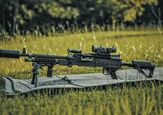
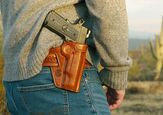
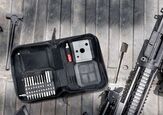





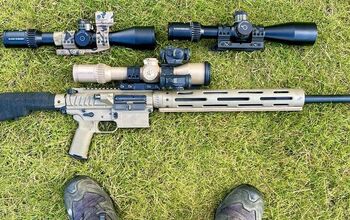




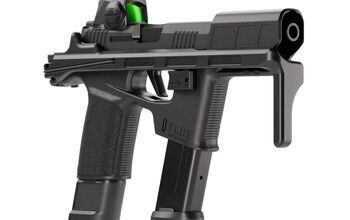

![[SHOT 2025] Brownells Shows BRN-180 Gen 3](https://cdn-fastly.thefirearmblog.com/media/2025/02/01/01291/shot-2025-brownells-shows-brn-180-gen-3.jpg?size=350x220)
![[SHOT 2025] Live Free Armory Apollo 11 Subcompact & Apollo 10 Pistols](https://cdn-fastly.thefirearmblog.com/media/2025/01/24/21371/shot-2025-live-free-armory-apollo-11-subcompact-apollo-10-pistols.jpg?size=350x220)
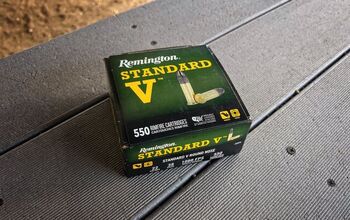






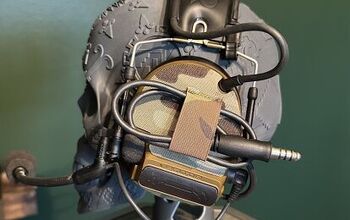
Comments
Join the conversation
I've actually got a lathe and threading a barrel isn't something I'm comfortable tackling. The setup is so specific better to find someone who does it on the regular...
Dies will cut threads. Could be good,more than likely will be bad, but there will be threads. A lathe with operator who knows how to use it and can hold tolerances and has the female device or thread class gauge on hand will also cut threads, probably much better threads. The knowing how to use the tooling is the key part of all that.